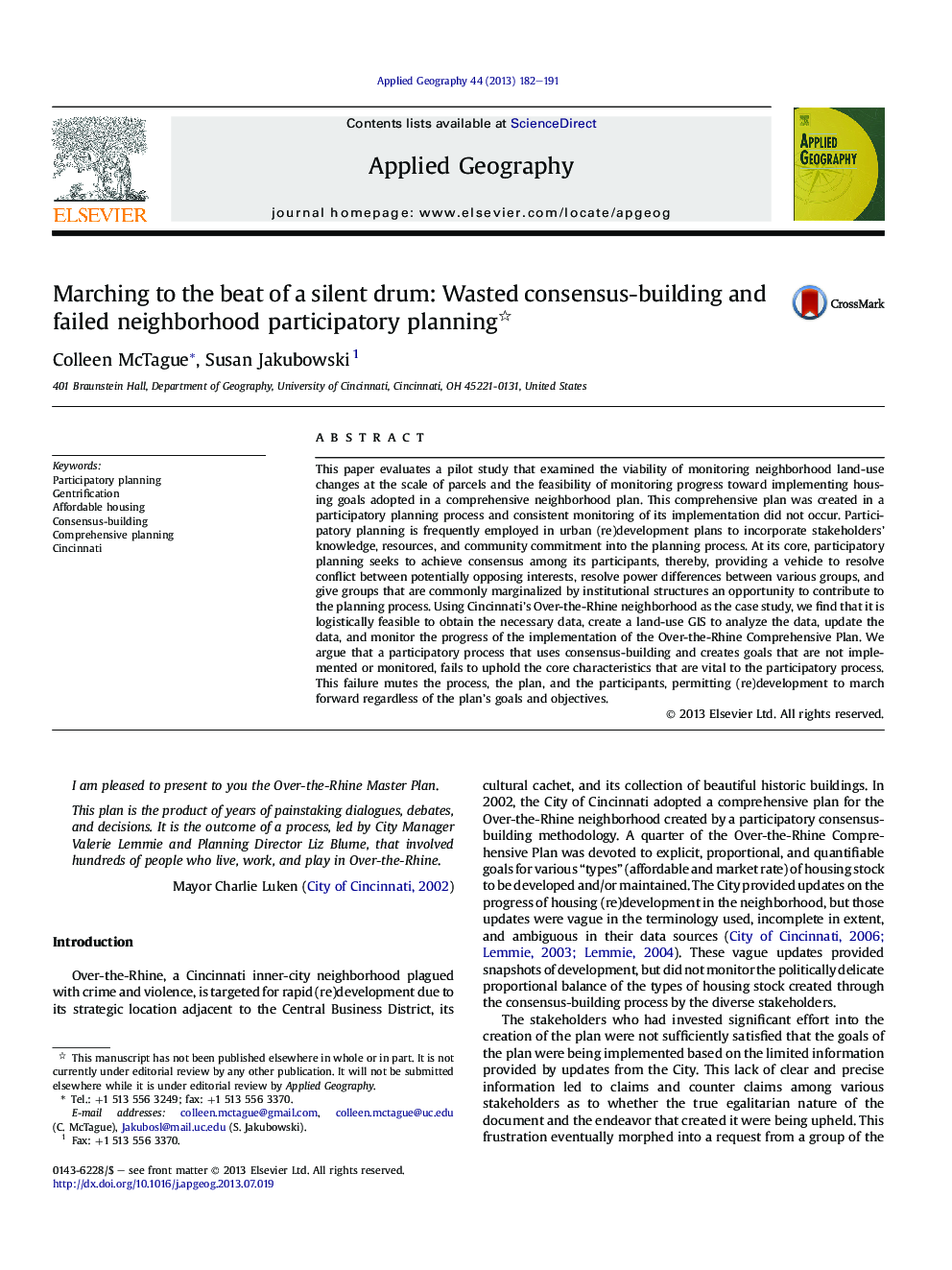| کد مقاله | کد نشریه | سال انتشار | مقاله انگلیسی | نسخه تمام متن |
|---|---|---|---|---|
| 83665 | 158729 | 2013 | 10 صفحه PDF | دانلود رایگان |

• A land-use GIS can analyze the necessary data to monitor implementation of a participatory plan.
• Failure to monitor (re)development fails to uphold core values of the participatory process.
• A participatory planning process without implementation renders the participatory process mute.
This paper evaluates a pilot study that examined the viability of monitoring neighborhood land-use changes at the scale of parcels and the feasibility of monitoring progress toward implementing housing goals adopted in a comprehensive neighborhood plan. This comprehensive plan was created in a participatory planning process and consistent monitoring of its implementation did not occur. Participatory planning is frequently employed in urban (re)development plans to incorporate stakeholders' knowledge, resources, and community commitment into the planning process. At its core, participatory planning seeks to achieve consensus among its participants, thereby, providing a vehicle to resolve conflict between potentially opposing interests, resolve power differences between various groups, and give groups that are commonly marginalized by institutional structures an opportunity to contribute to the planning process. Using Cincinnati's Over-the-Rhine neighborhood as the case study, we find that it is logistically feasible to obtain the necessary data, create a land-use GIS to analyze the data, update the data, and monitor the progress of the implementation of the Over-the-Rhine Comprehensive Plan. We argue that a participatory process that uses consensus-building and creates goals that are not implemented or monitored, fails to uphold the core characteristics that are vital to the participatory process. This failure mutes the process, the plan, and the participants, permitting (re)development to march forward regardless of the plan's goals and objectives.
Journal: Applied Geography - Volume 44, October 2013, Pages 182–191